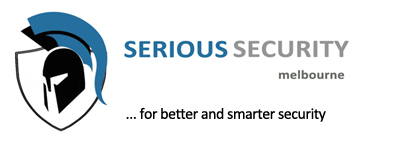The technology and IT sector is the epicenter of innovation, data handling, and digital transformation. As businesses store and manage vast amounts of sensitive data and intellectual property, protecting these digital assets from both physical breaches and cyberattacks is paramount. Electronic security systems play an indispensable role in safeguarding technology and IT resources.
Access Control Systems: Fortifying Data Centers and Tech Facilities
Access control systems are at the forefront of electronic security in the technology sector. These systems are designed to restrict access to data centers, server rooms, and secure areas within tech companies, ensuring that only authorized personnel can enter these spaces.
Access control systems enhance security by preventing unauthorized entry and providing a digital record of who enters and exits secure areas. This not only protects valuable data and equipment but also aids in maintaining accountability and compliance with data protection regulations.
Real-Life Example: Data Center Security
In a high-tech data center, access control systems require personnel to use biometric authentication to enter the server rooms. This added layer of security ensures that only authorized IT personnel can access critical infrastructure, thereby safeguarding sensitive data and equipment.
CCTV Surveillance: Monitoring Data Centers and IT Infrastructure
CCTV (Closed-Circuit Television) surveillance is a cornerstone of electronic security in the technology sector. Surveillance cameras are strategically positioned throughout data centers, IT facilities, and company premises, providing real-time monitoring and serving as a visual deterrent to potential security threats.
CCTV cameras not only help monitor activities but also provide valuable footage for incident investigation and evidence collection. These systems contribute to maintaining the safety and security of valuable digital assets.
Real-Life Example: IT Facility Surveillance
In a sprawling IT facility, CCTV cameras are positioned to cover critical areas such as server racks and networking equipment. These cameras deter unauthorized access and provide a visual record of all activities, ensuring the safety and integrity of IT infrastructure.
Alarm Systems: Rapid Response to Security Incidents
Alarm systems are essential in technology and IT security. These systems are designed to provide immediate alerts in response to security breaches, unauthorized access, fire emergencies, or other critical incidents. They can be integrated with motion sensors, door contacts, and environmental sensors to trigger alarms.
The swift response enabled by alarm systems allows IT personnel and security teams to address security incidents promptly, mitigating potential threats and protecting valuable digital assets.
Real-Life Example: Cybersecurity Operations Center
In a cybersecurity operations center, alarm systems are integrated with intrusion detectors. If a breach is detected, an immediate alarm is triggered, alerting the security team to take action. The rapid response helps safeguard sensitive data and defend against cyber threats.
Data Security: Safeguarding Digital Assets from Cyber Threats
In the technology sector, digital security is of paramount importance. Protecting sensitive data, intellectual property, and critical infrastructure from cyberattacks is a top priority. Electronic security measures such as firewalls, intrusion detection systems, and encryption protocols are employed to safeguard digital assets and data.
These measures play a crucial role in maintaining the confidentiality, integrity, and availability of digital resources, protecting against data breaches, cyber theft, and other online threats.
Real-Life Example: Cybersecurity Implementation
A technology company employs robust cybersecurity measures to protect its proprietary software and customer data. These measures include advanced firewalls, intrusion detection systems, and end-to-end encryption of sensitive information. This comprehensive approach ensures the security of digital assets against cyber threats.
In conclusion, electronic security systems have become integral in safeguarding the technology and IT sector, protecting data centers, intellectual property, and sensitive information from physical and digital threats. Whether it’s ensuring authorized access to secure areas, monitoring IT infrastructure, facilitating immediate responses to security incidents, or safeguarding digital assets from cyber threats, these systems are the backbone of security in the digital age.
